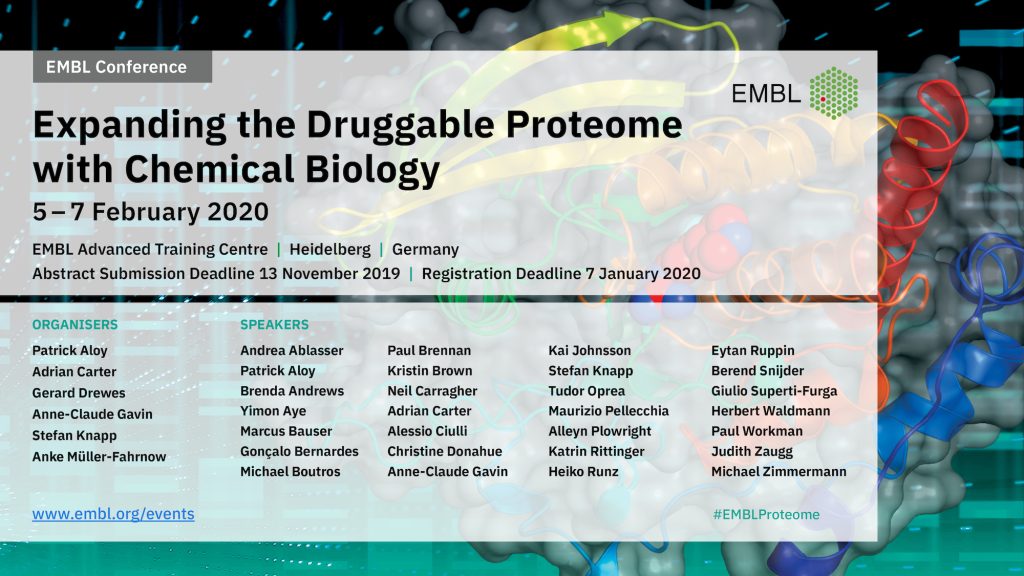Using chemical biology to expand the druggable proteome

Head of Science, GSK Cellzome, Germany
In 2020 the EMBL Resource Development team and industry partners of the EMBL Corporate Partnership Programme will bring together academic and industrial scientists with interests in chemical biology, chemogenomic libraries, pharmacology, medicinal chemistry and bioinformatics for the EMBL Conference: Expanding the Druggable Proteome with Chemical Biology (5-7 February 2020).
We spoke to co-organiser Gerard Drewes from GSK Cellzome about how chemical biology is helping to expand the druggable proteome.
How would you define the “druggable proteome”?
This is the fraction of our >20,000 human proteins that can be functionally modulated by a drug. Drugs can be small molecules or large molecules such as therapeutic antibodies. Estimates of how many proteins are “tractable” vary widely, I think there may be around 5,000. Only a subset of these 5,000 would be “druggable” which means that modulating them with a drug will also have a therapeutic benefit.
How are advances in chemical biology helping to expand the druggable proteome?
Small molecules are still the main modality for intracellular targets. Deep pockets, typical for enzymes, are more easily tractable than shallow pockets typical for protein-protein interactions. Chemical biology has developed tools to explore different types of pockets. I am excited in particular by the potential of DNA-encoded libraries, and small fragment approaches with covalent modes of action. Some of these compounds will just be “binders” but these can be made into target degraders as PROTACs.
How can these advances help our understanding of disease biology?
If we had more chemical probes, we could use these in a standardised, controlled way to interrogate target function in cell-based models, organoids, and in some cases animal models. Yes, we have gene editing now, but that is not the same as pharmacological modulation.
We also need in vitro models that translate better to in vivo. Our old immortalised cell lines won’t do, we are going to need more work in primary cells, organoids, etc.
What are the main challenges facing scientists in this field?
Lack of standardised probe sets. Bad probe compounds, e.g. with bad selectivity, are still used and wrong conclusions drawn.
Lack of translational in vitro models.
Why is it important to bring industry and academia together to discuss this topic?
Academia brings creativity, agility, fast progress of new ideas and concepts, thinking out of the box.
Industry sometimes lacks these but knows how to develop a compound into a drug, which requires a host of technologies not readily available to academia. Also, industry requires a new generation of drug targets with better validation, and historically targets are often discovered in academia. Once a target hypothesis exists, academics and industry should ideally collaborate to figure out how to drug it.
What will be the main highlight of this conference?
I see many but still hope to be surprised!
